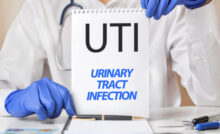Watch This Video to Understand the Alarming Rise in Cancer Cases and What You Can Do About It


Discover the alarming rise in cancer cases and essential preventive strategies in this insightful video.
Rise in Cancer Cases: A new study has revealed that cancer cases in men could see a significant increase, rising from 10.3 million in 2022 to 19 million by 2050, indicating an 84% growth. The research also indicates that men are at a higher risk of cancer and related deaths compared to women, primarily due to higher consumption of tobacco and alcohol.
Cancer remains one of the most challenging health issues globally, with its impact felt across all demographics. Recent research has highlighted a troubling trend: cancer cases among men are projected to see a significant increase in the coming decades. According to a new study, the number of cancer cases in men is expected to rise from 10.3 million in 2022 to 19 million by 2050, representing an alarming 84% increase. This surge in cancer incidence underscores a pressing need for understanding the factors contributing to this rise, the reasons behind the higher cancer risk among men, and the strategies that can be employed to address and mitigate this growing public health concern.
The Projected Increase in Cancer Cases
The projected increase in cancer cases from 10.3 million in 2022 to 19 million by 2050 is significant and demands immediate attention. This anticipated rise highlights several key aspects:
1. Growing Burden of Cancer: The forecasted increase in cancer cases indicates a growing burden on healthcare systems worldwide. As the number of cancer patients rises, there will be a greater demand for medical resources, including diagnostic tools, treatment options, and supportive care services.
2. Need for Early Detection and Prevention: The projected increase underscores the importance of early detection and prevention strategies. Early diagnosis can significantly improve treatment outcomes and reduce the overall impact of cancer on patients and healthcare systems.
3. Impact on Quality of Life: The rise in cancer cases will likely impact the quality of life for many individuals and their families. Cancer and its treatments can lead to physical, emotional, and financial challenges, highlighting the need for comprehensive support services.
4. Research and Innovation: Addressing the projected increase in cancer cases will require ongoing research and innovation in cancer prevention, treatment, and care. Investing in research can lead to the development of new therapies, improved diagnostic techniques, and better strategies for managing cancer.
Factors Contributing to the Rise in Cancer Cases
Several factors contribute to the anticipated increase in cancer cases among men. Understanding these factors is crucial for developing effective strategies to combat the rise in cancer incidence:
1. Tobacco Consumption: Tobacco use is one of the most significant risk factors for cancer. Smoking is strongly associated with various types of cancer, including lung, throat, and mouth cancers. Despite widespread awareness of the health risks, tobacco consumption remains high in many regions, contributing to the rising cancer rates.
2. Alcohol Consumption: Excessive alcohol consumption is another major risk factor for cancer. Alcohol is linked to cancers of the liver, esophagus, and breast, among others. High levels of alcohol consumption can lead to changes in the body that increase cancer risk.
3. Diet and Nutrition: Poor dietary habits, including low consumption of fruits and vegetables and high intake of processed foods, can contribute to cancer risk. Diets high in saturated fats, red meats, and sugars have been linked to an increased risk of several types of cancer.
4. Physical Inactivity: Lack of physical activity is associated with an increased risk of cancer. Regular exercise helps maintain a healthy weight, reduce inflammation, and improve overall health, which can lower cancer risk.
5. Environmental and Occupational Exposures: Exposure to certain environmental and occupational hazards, such as asbestos, chemicals, and radiation, can increase cancer risk. Addressing these exposures through regulations and safety measures is crucial for reducing cancer incidence.
6. Genetic Factors: Genetics play a role in cancer risk. Some individuals may have inherited genetic mutations that increase their susceptibility to certain types of cancer. Genetic predisposition can interact with environmental and lifestyle factors to influence cancer risk.
7. Aging Population: As the global population ages, the incidence of cancer is expected to rise. Older individuals are at a higher risk of developing cancer due to the cumulative effects of environmental exposures, lifestyle factors, and age-related changes in the body.
8. Healthcare Access and Awareness: Limited access to healthcare and lack of awareness about cancer prevention and early detection can contribute to higher cancer rates. Improving healthcare access and education can help reduce the impact of cancer.
The Higher Risk of Cancer in Men
Research indicates that men are at a higher risk of cancer and related deaths compared to women. Several factors contribute to this gender disparity:
1. Higher Tobacco and Alcohol Consumption: Men are generally more likely to engage in high-risk behaviors such as smoking and excessive alcohol consumption. These behaviors are strongly associated with increased cancer risk, contributing to the higher cancer rates observed in men.
2. Biological Differences: Biological differences between men and women can influence cancer risk. For example, some cancers are specific to each gender, such as prostate cancer in men and ovarian cancer in women. Additionally, hormonal differences can affect cancer risk and progression.
3. Delayed Medical Seeking Behavior: Men are often less likely to seek medical care or report symptoms compared to women. This delay in seeking medical attention can lead to later-stage diagnoses and poorer outcomes.
4. Workplace Exposures: Men are more likely to work in occupations with higher exposure to carcinogens, such as construction, manufacturing, and mining. These occupational exposures can contribute to increased cancer risk.
5. Genetic Factors: Certain genetic mutations associated with cancer may be more prevalent in men or have different impacts on men compared to women.
Strategies for Addressing the Rise in Cancer Cases
Addressing the projected increase in cancer cases requires a multifaceted approach that includes prevention, early detection, treatment, and support:
1. Enhancing Prevention Efforts: Public health initiatives focused on reducing tobacco and alcohol consumption, promoting healthy diets, and encouraging regular physical activity can help lower cancer risk. Education campaigns and community programs can play a vital role in raising awareness about cancer prevention.
2. Improving Early Detection: Investing in research and development of advanced screening and diagnostic technologies can lead to earlier detection of cancer. Regular screenings for high-risk populations and public education about the importance of early detection are essential.
3. Supporting Research and Innovation: Funding and supporting cancer research can lead to new treatments, therapies, and strategies for managing cancer. Collaborative efforts between researchers, healthcare providers, and policymakers can drive progress in cancer care.
4. Enhancing Healthcare Access: Improving access to healthcare services, particularly for underserved populations, can help reduce cancer incidence and mortality. Efforts to increase healthcare coverage, affordability, and accessibility are crucial.
5. Addressing Environmental and Occupational Hazards: Implementing regulations and safety measures to reduce exposure to carcinogens in the environment and workplace can help lower cancer risk. Advocacy for stronger environmental protections and workplace safety standards is important.
6. Promoting Healthy Lifestyles: Encouraging individuals to adopt healthy lifestyles, including balanced diets, regular exercise, and avoiding harmful behaviors, can help reduce cancer risk. Community programs and policies that support healthy living are beneficial.
7. Providing Support Services: Comprehensive support services for cancer patients, including psychological support, financial assistance, and survivorship programs, can improve quality of life and outcomes for individuals affected by cancer.
8. Fostering Public Awareness and Education: Raising public awareness about cancer risks, prevention, and early detection through education campaigns and media outreach can empower individuals to take proactive steps for their health.
The projected rise in cancer cases among men is a significant public health concern that requires urgent and coordinated efforts. Understanding the underlying factors contributing to this increase, addressing the higher cancer risk in men, and implementing effective strategies for prevention, early detection, and treatment are essential for mitigating the impact of cancer.
By investing in research, improving healthcare access, promoting healthy lifestyles, and supporting public education, we can work towards reducing the incidence of cancer and improving outcomes for individuals affected by this challenging disease. Addressing the growing burden of cancer requires a collective commitment from individuals, communities, healthcare providers, and policymakers to ensure a healthier future for all.
Recent Posts
Holi and Eye Safety: Protect Your Vision During Festivities
Holi, the festival of colors, is one of the most vibrant and joyous celebrations in…
FDA Recalls Popular Skincare Products Over Cancer-Causing Chemical
In a major development, the U.S. Food and Drug Administration (FDA) has issued recalls for…
Kidney Transplant Crisis: Why 98% of Patients in Delhi Die Waiting
In Delhi, the struggle for kidney transplant patients is a dire one. Less than 2%…
Diabetes & Eye Health: Why Regular Screening Matters
Diabetes is a chronic condition that affects millions of people worldwide. It occurs when the…
What Happens to Your Body in the First 72 Hours After Quitting Smoking?
Quitting smoking is one of the most significant steps you can take to improve your…
Deadly Flu Outbreak in Delhi-NCR: Hospitals Overwhelmed
As the warmer months set in, Delhi-NCR is witnessing an alarming surge in flu cases,…


